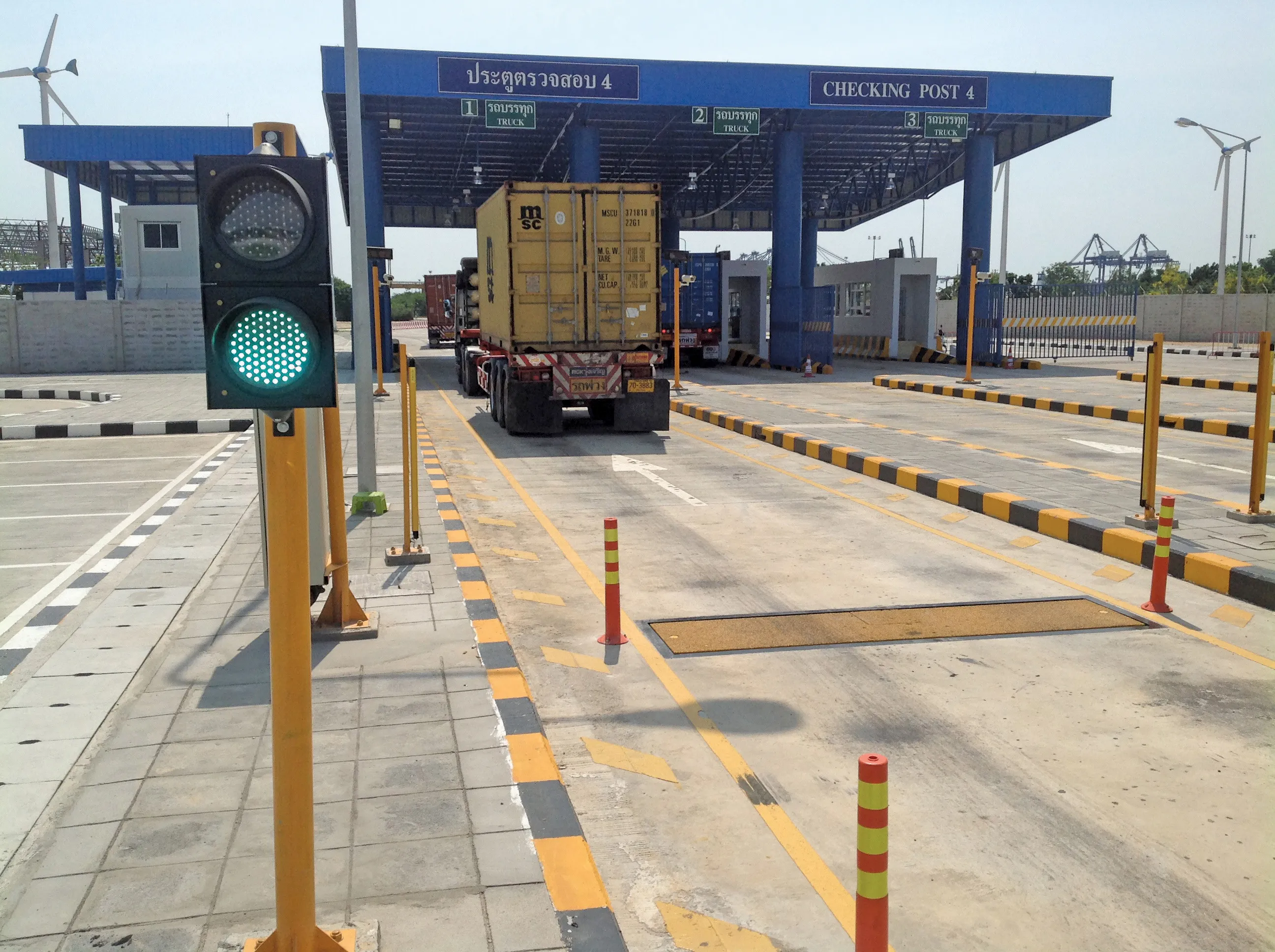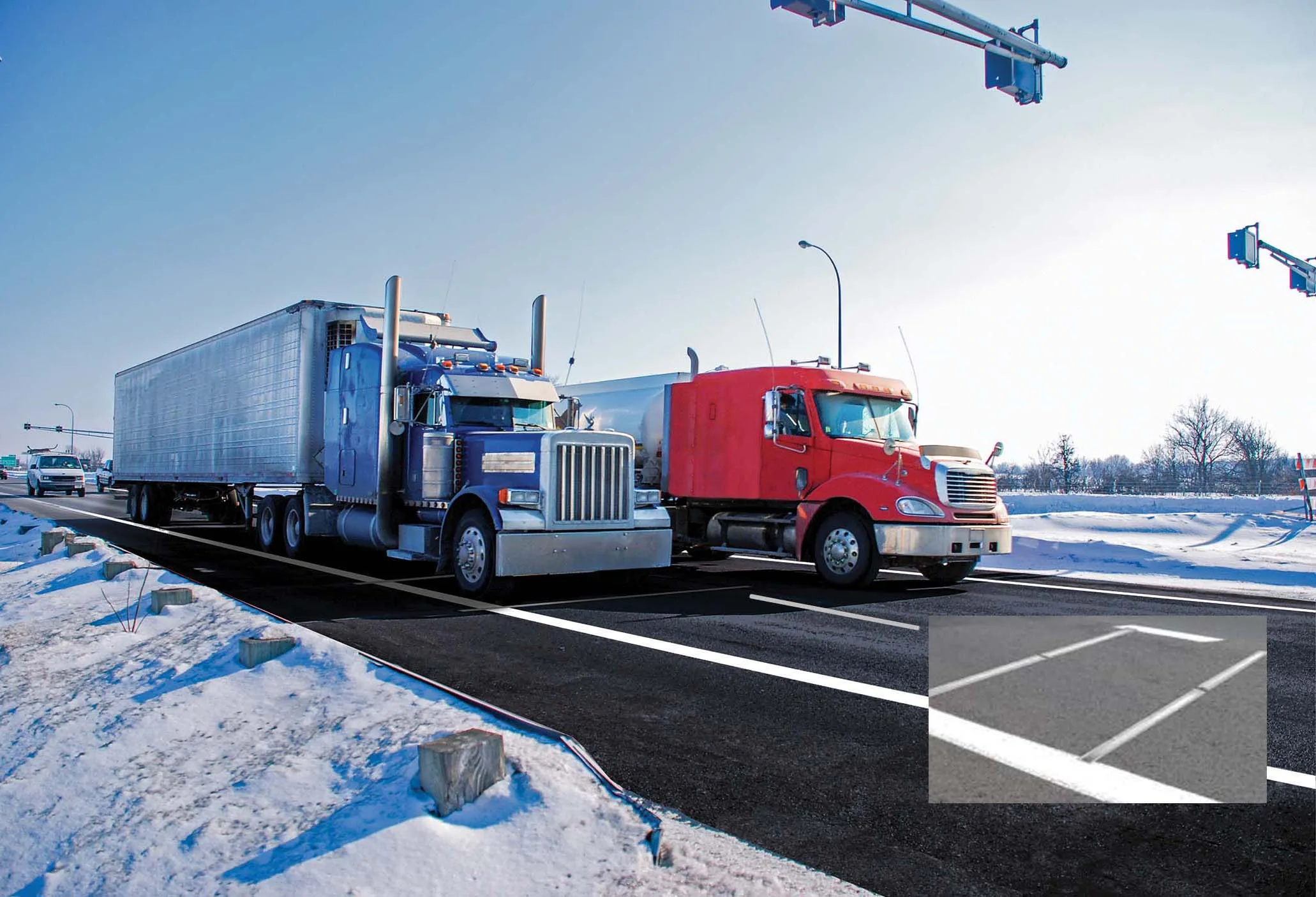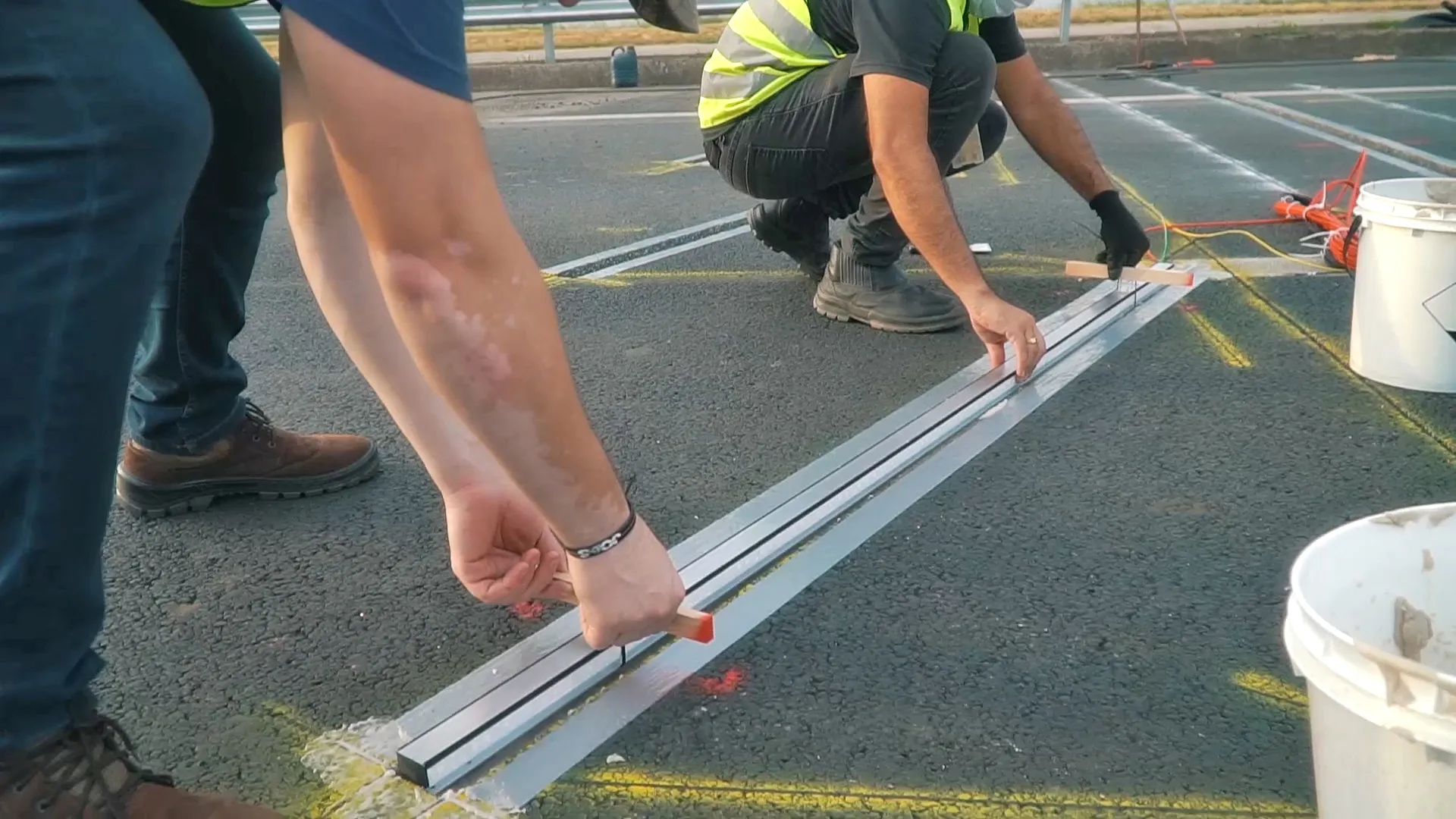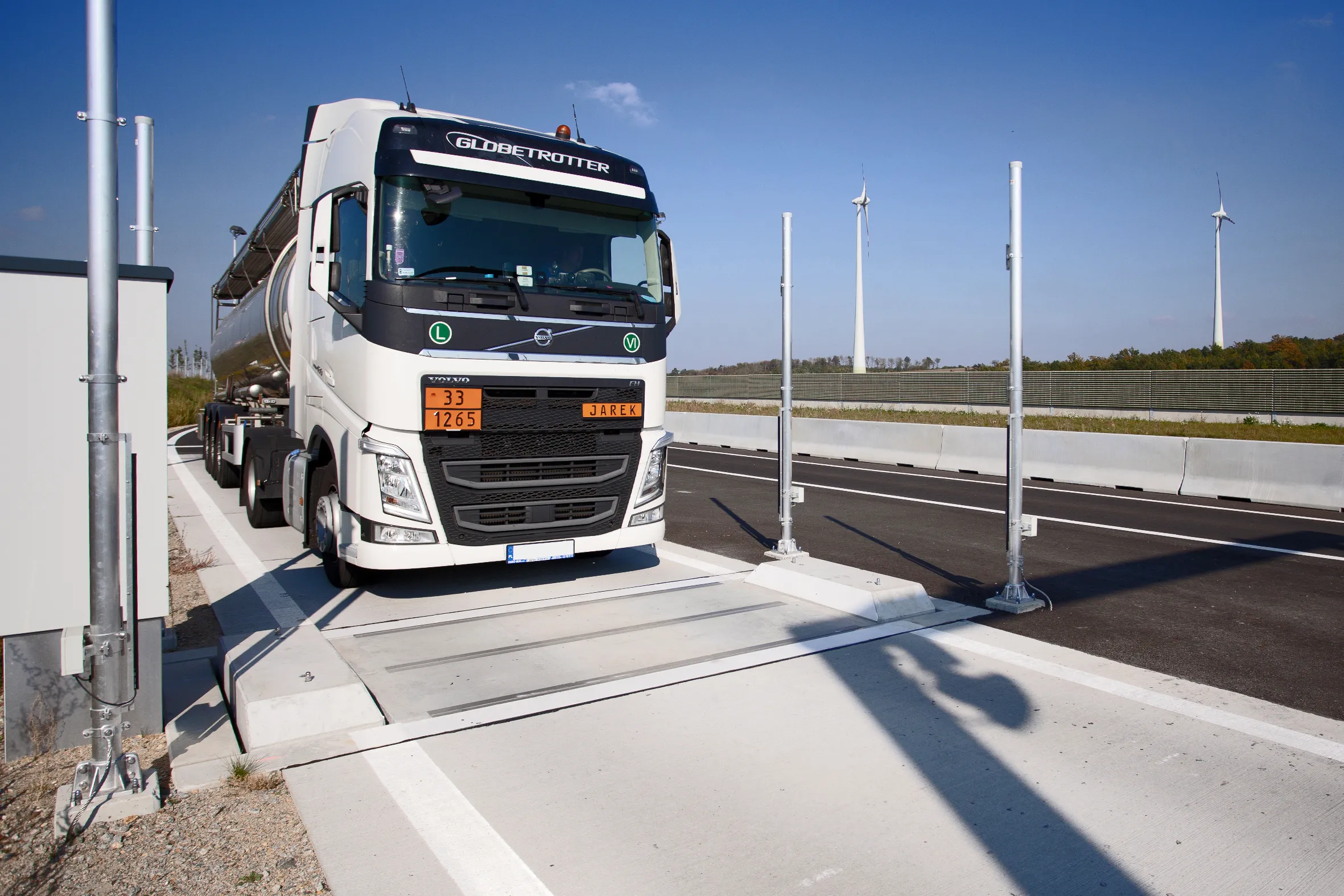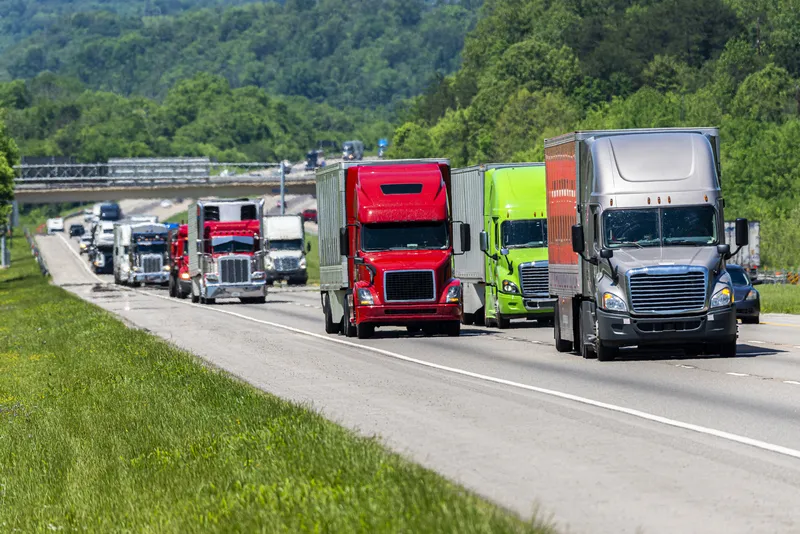
The use of weigh-in-motion - WiM - systems to monitor the punishing weight of overladen vehicles that can quickly deteriorate road surfaces is an acceptable means of law and regulation enforcement. But the use of WiM systems to monitor the health of bridges is increasingly seen as essential as road agencies strive to maintain what is often quickly ageing infrastructure.
“Road operators are facing increasing challenges related to the ageing of the infrastructure, especially when looking into bridge infrastructure,” says David Cornu, head of business unit traffic solutions at Swiss firm Kistler. “More and more bridges are showing increased structural deficiencies and approaching in a fast pace their end of service life. WiM has proved to be a strong means to identify overloaded vehicles. For the upcoming years we expect a further push into the deployment of automatic WiM enforcement sites, where trucks are automatically fined in case of overloading.”
Cornu believes this will enable efficient protection of the bridge infrastructure and at the same time an increase in traffic safety. “In combination with our bridge structural health monitoring systems, the health and strength of a bridge structure can be fully assessed and monitored over time, to ensure a safe operation 24/7 and to allow a safe extension of its service life.”
Direct enforcement is one area of WiM that could provide impetus for companies in the sector – but some are still waiting for its promise to be realised. “I had high hopes that direct enforcement would move WiM forward,” admits Florian Weiss, chief executive and owner of WiM specialist Traffic Data Systems, a family-run business in Germany. “We haven’t seen that yet.”
Extra data
However, Weiss has certainly seen the rise in importance of WiM in terms of bridge maintenance. “In particular customers are recognising that there are problems on bridges caused by overloaded vehicles,” he says. “WiM is a way of monitoring real weights on bridges. I see a shift in 2024 from statistics - the simple vehicle-counting approach - to actual monitoring.” The extra data this gives you is vital, he says “In order to find a solution, you need to know how a bridge is really used. In many countries they have a sufficient amount of traffic counters – but is a tractor with a trailer empty? Half-loaded? Overloaded? This is the information you can get only from WiM, not a traffic counter.”
In much the same way, authorities are realising that the costs of not doing anything are out of proportion with the alternative, he says. “If you take the cost of replacing 300m of a six-lane motorway with the cost of implementing a WiM system, it’s nothing.”
Leonardo Guerson, WiM product manager and application engineer at US-based Intercomp, is seeing high-quality WiM data increasingly used for traffic input in road asset management, particularly in pavement design and maintenance. “This development is propelled by the availability of cost-effective, high-accuracy WiM sensors now on the market, allowing for the establishment of an adequate number of WiM sites to collect representative data.”
Guerson says that access to precise traffic load data reduces the need for estimations, significantly enhancing the accuracy of infrastructure designs and maintenance actions aligned with infrastructure demands. “By using high-accuracy data-collection sensors, end users not only enhance the reliability of their datasets but reduce ownership costs, thanks to less frequent recalibrations and sensor replacements.”
Václav Blahník, product manager of WiM at Czech company Cross Zlín, points to what the company sees as a “probably very turbulent” year ahead. He believes this turbulence might open the door for WiM companies which are happy to embrace complication on behalf of their customers. “For this reason, we will get more complex implementations, including additional technologies like laser scanning, profiling, RFID vehicle detection etc,“ he says. “Due to this, we expect further requirements to integrate WiM systems into superior ITS systems.“
Pivotal role
Meanwhile, the Canadian company International Road Dynamics – IRD - sees a growing need to enhance road safety by identifying tyre types and tyre anomalies. “We believe that, in 2024, the requirements for tyre anomaly detection will continue to grow and play a pivotal role in the industry,” insists IRD chief executive Rish Malhotra.
IRD’s Tire Anomaly and Classification System measures tyre width and detects problems, as well as classifying vehicles based on their tyre properties. “From a law enforcement perspective, this well-adopted technology provides significant advantages, enabling authorities to identify and manage safety risks more effectively, thereby predicting and preventing road accidents,” explains Malhotra.
Given the growing demand from commercial vehicle enforcement agencies, he says, this outlook, when coupled with the power of AI will deliver innovative solutions to improve truck safety. “These will continue to align with IRD’s mission to champion safer and more efficient roadways worldwide. The combination of machine learning, deep neural networks and computer vision provides opportunities to address in new ways an increasing range of functions that are a part of commercial vehicle operations.”
The International Society for Weigh in Motion (ISWiM) represents researchers, vendors and end-users of WiM technology, both infrastructure- and vehicle-based. In November it held a conference in Brisbane, Australia, with the International Forum for Heavy Vehicle Transport & Technology. The HVTT Forum promotes and supports development of road freight transport technology, safety and policy and facilitates information exchange between researchers, policy makers, regulators, road agencies and the transport industry.
Andy Lees, Q-Free independent consultant on WiM and information officer for ISWiM, was at the event and points to another trend which is opening up. “The improvement in vehicle classification for WiM has long been a goal and the recent introduction of loop profiling is starting to make inroads into this issue,” he says. “In fact, a paper was presented at the recent Technology Convergence conference in Brisbane on this very topic,” says Lees.
But it is the newest of technologies which will really start to make this sing. “The application of artificial intelligence is now enhancing this process by using neural networks to help improve the complex algorithms used to determine vehicle types,” says Lees. “The advantages of adopting machine learning techniques for this process are numerous and varied. The end user is provided with enhanced identification and categorisation methods which would otherwise be unobtainable, such as electric vehicle identification, vehicles with raised axles, low platform versus box trailers versus tanker trailers to name but a few.”


